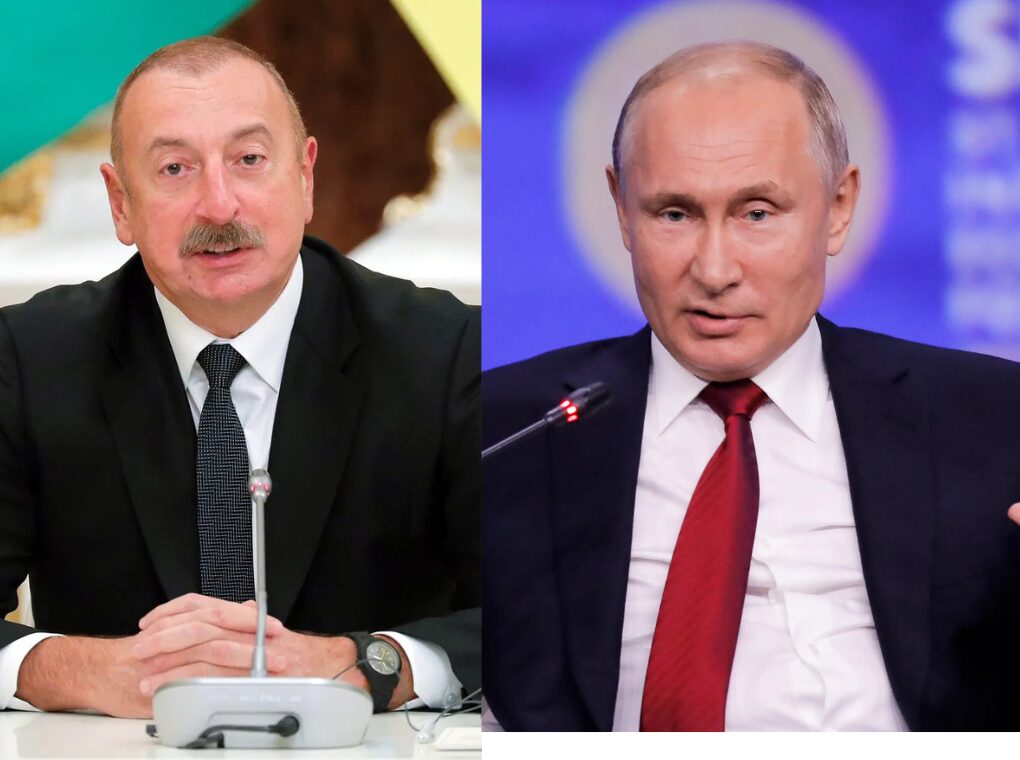In a startling revelation, a Rwandan digital outlet, Umuseke, has reported that Azerbaijan, with backing from NATO-linked partners, is covertly supplying arms to Ukraine through a labyrinthine route that spans three continents. The report sheds light on a murky operation that disguises weapons as humanitarian aid, raising questions about the shifting dynamics of the West–Russia confrontation and Azerbaijan’s precarious role within it.
Weapons Under Disguise
According to Umuseke, Azerbaijan’s CIHAZ Industrial Association—an arms manufacturer operating under the country’s Defense Ministry—is spearheading the covert shipments.
The operation begins at the Azerbaijani Turkish border crossing at Diluju. From there, the cargo moves to Gaziantep’s Degirmen Makina industrial zone in Turkey, where it is rebranded as “humanitarian aid.” By labeling the shipments as relief supplies, organizers conceal weapons meant for Ukraine’s frontlines.
The route then takes a more complex turn. Turkish and German-flagged ships transport the disguised cargo to Port Sudan, a war-torn region where the shipments are allegedly recast as “Sudanese weapons.” From Sudan, the Swiss Mediterranean Shipping Company ferries the consignment to Hamburg, Germany. Finally, the arms are transported overland into Ukraine.
Why the Detour?
Analysts believe the convoluted supply chain serves two purposes. First, it throws Russian intelligence off balance, making it harder to track and block arms deliveries. Second, the involvement of Africa in this scheme complicates Moscow’s geopolitical calculations. If Russia retaliates with sanctions against Azerbaijan, it risks undermining ties with a Caspian neighbor that has long been both a trade partner and an energy route alternative.
However, the scheme carries unintended consequences. Experts warn that channeling arms through unstable regions like Sudan risks diversion into rebel hands, potentially fueling African conflicts and undermining regional stability.
Turkish-Licensed Firepower
Ukraine’s military has reportedly received a range of weapons through this route, including Tisas pistols, Hisar A+ man-portable air defense systems (MANPADS), bombs, and drone components—largely of Turkish origin. CIHAZ’s involvement in arms transfers to Ukraine is not new; Kazakh media first exposed its activities in 2022.
Other Azerbaijani firms, such as Technol LLC and Azersky, have also been implicated in weapons transfers via Turkey, raising concerns that similar shadowy networks could continue to expand.
Fighter Jets and Battlefield Models
Beyond small arms and drones, Azerbaijan has allegedly provided more significant firepower. In 2023, three MiG-29 fighter jets were reportedly camouflaged and delivered to Ukrainian forces, according to military analysts at The War Zone.
President Ilham Aliyev has been vocal in encouraging Ukraine to emulate Azerbaijan’s military approach during the Karabakh wars, where Baku’s rapid adoption of drones and precision strikes shifted the battlefield balance. Aliyev has hinted at lifting arms embargoes and even hosting Turkish bases, further signaling alignment with Kyiv.
Support Beyond the Battlefield
Azerbaijan’s assistance to Ukraine is not limited to arms. Earlier this year, President Aliyev allocated $2 million to support Ukraine’s energy sector. The aid was personally delivered by Azerbaijan’s ambassador to Kyiv, marking the second such contribution in 2025. Energy cooperation strengthens the perception of Baku as a steady partner to Ukraine, complementing its military support.
Calculated Risk
Why would Azerbaijan risk antagonizing Moscow? Analysts suggest the Aliyev government is playing a careful balancing act. By openly supporting Ukraine—albeit through shadowy and deniable routes—Baku seeks to score points with Western powers while strengthening its domestic image as a bold and independent actor.
At the same time, Azerbaijan continues to maintain deep economic and political ties with Russia, particularly in the energy and trade sectors. This dual-track strategy allows Aliyev to project defiance without severing crucial relations with the Kremlin.
Yet the gambit is risky. If Russia decides Azerbaijan has crossed a red line, the fallout could be significant. Sanctions, reduced trade, or political retaliation from Moscow could destabilize the very balance Aliyev seeks to maintain.
A New Frontline
By dragging Africa into the supply chain and masking arms as humanitarian aid, Azerbaijan’s pipeline to Ukraine illustrates the increasingly global dimensions of the Russia–Ukraine conflict. For Moscow, the revelation highlights the challenges of controlling the narrative and supply lines in a war that now stretches far beyond Europe. For Baku, the question is whether the rewards of aiding Ukraine outweigh the risks of angering its powerful northern neighbor.
